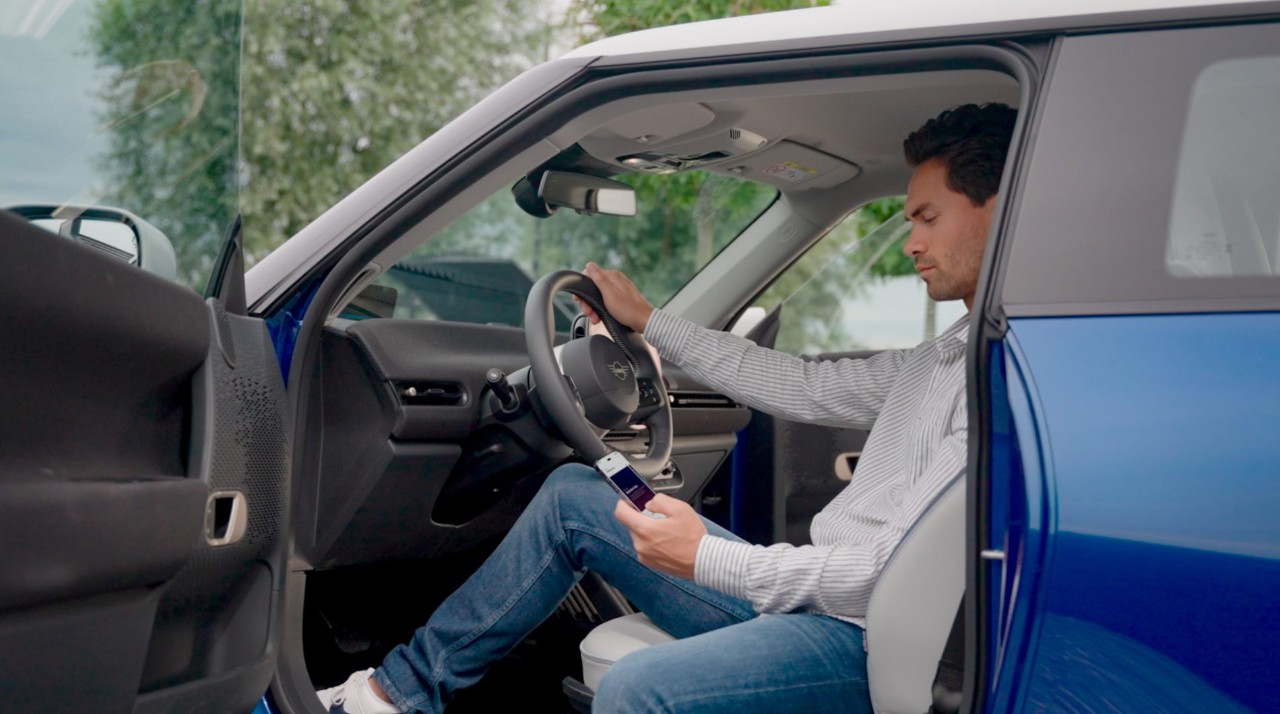What’s the right charging mindset?
Most people charge their mobile phones to 100% every night, so they’re prepared for whatever the next day has to throw at them. This is fine for phones, but not a good strategy for EVs.
Batteries don’t degrade in EVs anything like they do in phones. Nonetheless, it’s important to have the right mindset in order to extend the battery life of a vehicle – and to put less pressure on your home electrics.
There are two key factors to consider for healthy battery charging: speed, and amount. Whenever you need to charge a vehicle, it’s best to do it at a slower speed. While rapid chargers can fill the battery in as little as 10-20 minutes, doing so every time will put undue stress on the EV and risk shortening its lifespan (though it’s likely to take a lot of fast charges to do long-term damage).
Consider the level of charge you need. Most EVs include software to stop the battery charging at certain points. In most cases, for everyday use, the magic number is 80%. You can charge to 100% when required, but if 80% is sufficient for everyday use, or a few days at a time, charge to that level. Finally, consider how often you charge. If you do an average of 40 miles a day and an 80% charge is enough for 200 miles, charging once every four days should more than suffice.
Over 90% of plug-in vehicle charging in the UK takes place at home. But very few of those charges are from 0-100%. In reality, you’ll only need to plug-in when your battery gets down to 20% – and with the right mindset, you can avoid ever having to queue at a service station again. Charge while you sleep, and you can wake up ready to drive for days on-end without another session. Plus, with preconditioning, you can even set your vehicle to warm up while it’s still plugged in, so in the winter months you don’t waste battery while on the go.
Slow charging explained
The slowest charging option to consider is the three-pin supply. This uses a typical household plug to charge the car, meaning no additional electrical installation is required. However, it really is a slow option, typically topping out at around 3kW, adding around 15 miles per hour of charge. This means taking a common 64kWh battery from 20% to 80% would take around 18 hours. This makes it an unviable option for heavy car users, although it is still a good choice to consider when away from home, as the only infrastructure required is the charging cable and a plug socket.
It’s also worth considering that most household sockets are not designed to deliver maximum power for long periods of time. There is a risk that extended and repeated use could damage the socket.
Fast charging explained
The AC wallbox is becoming an increasingly common sight across the UK. They’re on driveways, they’re in car parks and they’re on business premises. Available in a range of shapes and sizes, they can work with solar panels or alternative fuel sources. Some come with cables built in and some can charge two vehicles at once. The options are endless.
Depending on the electricity supply, these wallboxes typically charge at 7kW, or 22kW if three-phase supply is available. This is more than enough to add hundreds of miles to the range of a vehicle in a few hours, or overnight. Many options can also integrate with smart tariffs too, so cars can be charged for a fraction of the energy cost at off-peak times.
They're the ideal option for periods where a car won’t be in use. Whether it’s in the company car park during the working day, or overnight at home, they’re a reliable and effective way of ensuring a battery is at the required level when it’s needed. However, they’re not a great option for charging quickly at a service station, or in the middle of a journey, as charging a 64kWh battery from 20% to 80% would take around five hours.
Rapid charging explained
DC charging, also known as rapid charging or a combined charging system, is crucial for long-distance travel in EVs.
Commonly delivering speeds over 50kWh, rapid charging is an increasingly common sight across the UK, with chargers showing up at supermarkets, on motorways and at popular destinations. 50kWh rapid chargers offer an effective way of filling a battery in around an hour. This makes them a great option for quick stops when the battery doesn’t need a total recharge, or at destinations where people are likely to spend an hour. Meanwhile, faster rapid chargers can deliver speeds over 100kWh, making them a better option for quick stops on motorways or other high traffic areas.
There are two key considerations you need to remember for rapid charging, besides long-term battery health: cost and speed. While charging at a 50kWh rapid charger can be useful on long journeys, it’s an expensive method for day-to-day use. Plus, it places additional stress upon a battery, potentially leading to increased degradation over the lifespan of the vehicle.
The other consideration is cost. Rapid charging is by far the most expensive form of charging available to EV users. While overnight home charging could cost as low as 9p/kWh, DC rapid charging could cost in excess of 75p/kWh. Because of this, it’s best to consider rapid charging as an occasional necessity, not a regular method of charging.
Ultra-rapid charging explained
With EV technology advancing as rapidly as it is, it’s no surprise to see new chargers arriving too.
Top of the current charging tree is the ultra-rapid charger, capable of speeds well in advance of 150kWh. This blazing speed has the potential to fill a car’s battery in just a few minutes, making long journeys simple and fast. Currently, ultra-rapid charging options from brands like Ionity, Gridserve and Tesla can deliver up to 360kWh, making them almost faster than refuelling a petrol car.
However, it’s important to note that the advertised speeds for DC rapid charging aren’t always as they seem. Every car has a different maximum charging speed, meaning many models can’t take full advantage of the fastest chargers. Today, a BMW i4, for example, can charge at a maximum speed of 195kW, while an MG4 Trophy can charge at 135kW. These speeds are only likely to increase as technology advances. Charging is not linear either, so you might not see maximum charging speed for very long.
With ultra-rapid charging being quite new, and few cars able to accept the maximum speeds from them, they’re few and far between in the UK. While they are likely to pop up with increasing frequency in the near future, they’re currently a relatively rare sight, especially away from motorways.
For more information on charging speeds, see our table below:
Slow Charging
(3-6kW):
-
Style:
3 pin socket/Granny charge
-
Power:
AC
-
Source:
Uses a mains supply
-
Connector:
Type 2
-
Tethering:
Generally untethered but for home chargers you often have the choice (at the point of installation)
Fast Charging
(7-22kW):
-
Style:
Typical for home chargers
-
Power:
AC
-
Source:
Uses a mains supply or solar panels
-
Connector:
Type 2
-
Tethering:
Generally tethered
Rapid Charging
(50kW+):
-
Style:
Always tethered (typical for most services style chargers)
-
Power:
DC
-
Source:
Mains or local generation
-
Connector:
CCS
-
Tethering:
Tethered
Ultra Rapid Charging
(150kW+):
-
Style:
Always tethered (generally found at services - not all vehicles can accept a charge at this speed)
-
Power:
DC
-
Source:
Mains or local generation
-
Connector:
CCS
-
Tethering:
Tethered
Finding a charger
Every day, new publicly-accessible charging points are popping up across the UK; there are currently 3x more electric charge points than there are petrol stations. They’re in service stations, gym car parks, supermarkets and even on people’s driveways. Fortunately, apps exist to help. Zapmap has become an essential tool for many EV owners, as it shows where all the chargers are, how fast they are and whether they’re in working order or not. Plus, with the Alphabet App, you can connect your current contract for more important updates as well as view a charging map. They’re invaluable tools if you’re planning a long journey.
Google and Apple are both improving their EV-specific tools as well. Now, you can tell Google Maps that you drive an electric vehicle and it will hunt for charging stations, rather than petrol stations along your route. Easy.
New government regulations have also been introduced which require all public charge points to take contactless payment (from one year after the regulations come into force). That’s great news for drivers, as it means you won’t have to worry about having the right app in order to charge up on route – just tap and go!
Installing chargers at home or at work
If you have a dedicated parking spot or driveway, installing a charger is relatively straightforward, but will require professional support. Your electricity supply and fuse box will be checked for suitability, then a cable run to the chosen location. The whole process is simple and can be completed in a few hours.
If you’re an Alphabet customer, you’re in luck. We’ve partnered with E.ON to make the process effortless. Together we offer a range of options, from 7kW wallboxes to flexible 50kW installations, capable of charging multiple vehicles at once. E.ON will be on hand to guide you through the entire process, to keep things as simple as possible.
With over 5 million customers in the UK, E.ON is an experienced supplier and installer of EV charging solutions, ready to support you every step of the way. From our seamless online portal, through to a virtual home survey and effortless installation, you can start your road to electric with Alphabet and E.ON in five simple steps:

Starting your road to electric
- An invitation is sent by Alphabet, with exclusive offer to join E.ON Next.
- Driver uses link to complete eligibility questionnaire online.
- E.ON Next provides an indicative cost based on the questionnaire inputs.
- Customer calls E.ON Next to book a good time for the virtual survey.
- Driver shares useful images by email before the virtual survey.
- 40 min video call with E.ON Next to complete the virtual survey.
- The electric vehicle charger is chosen.
- A quotation is provided on email, following the virtual survey.
- The driver electronically agrees and signs the quotation.
- E.ON Next submits the application to the Grid for approval (up to 45 days).
- E.ON Next contracts the driver to arrange a date for the installation.
- 24 hours before the installation a reminder email is sent to the driver.
- Installation of the charge point and demo of how to use and manage it.
- Certificates for the work are provided to the driver.
- Final payment is made and an email confirmation is sent.
- Driver support is available 24/7, 365 days a year.
What about charging strategies?
Inevitably, there may be times when your EV doesn't charge as expected. Whether it's an issue with your home charger or a public charging station, it's important to know how to handle these situations.
If you're having trouble with your home charger, the first step is to contact the company that supplied it. They will be able to provide troubleshooting assistance and help you get your charger back up and running.
For issues with public charging stations, most have a support line clearly displayed on the charging point. Don't hesitate to give them a call—they'll be able to help you diagnose and resolve the problem.
All electric vehicles are fitted with technology that monitors the status of your battery and will alert you when it’s starting to run low, but as with any battery, if you don’t recharge an EV battery, it will run out. If you do find yourself in a situation where your car has run out of battery and you're stranded, do not attempt to move the vehicle. Instead, safely pull over to the side of the road, put your hazard lights on, turn the vehicle off, and call for roadside assistance.
Your roadside assistance provider will be able to help get you back on the road safely.
By being proactive and knowing what to do in these types of situations, you can help ensure a smooth and stress-free transition to driving an electric company car.
Talk to our experts




